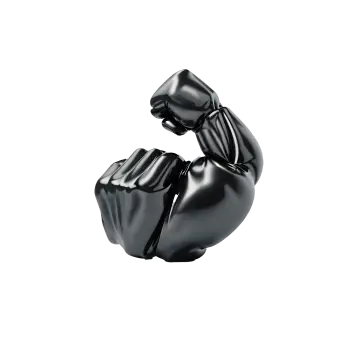Quick version
What exactly is testosterone deficiency?
Hypogonadism, or testosterone deficiency as it may be more commonly known, is not particularly common but can still affect men of various ages. Approximately 2% of men between the ages of 40 and 60 have hypogonadism, while the figure rises to around 5% for men over 60. The condition becomes more common as men age, which is natural since testosterone levels gradually decrease after the age of 30. Additionally, overweight men and those with other health problems, such as chronic diseases or general poor health, are at higher risk of developing testosterone deficiency. It is important to be aware of these factors, as they may increase the need to consider testosterone therapy or at least investigate whether a deficiency is present.
Where is the threshold for testosterone deficiency?
The threshold for testosterone deficiency is not always easy to determine, as several factors must be considered. It is possible to have a low total testosterone level (S-testosterone) without suffering from deficiency if the free, biologically available testosterone (free bioactive testosterone) – the active form of the hormone – is at a sufficiently high level. Free testosterone is influenced, among other things, by the concentration of SHBG (sex hormone-binding globulin), a protein that binds to testosterone in the blood, making it less available to the body. If SHBG is elevated, it can reduce the amount of free testosterone, even if total testosterone levels appear normal. Therefore, when investigating hypogonadism, it is important to not only look at the total testosterone level but also SHBG levels and the balance between them to get a complete picture of testosterone status and determine whether treatment is necessary.
Reference values for S-testosterone
| Age | Lower Limit | Upper Limit | Unit |
|---|---|---|---|
| 21 - 49 years | 5.7 | 26 | nmol/L |
| 16 - 20 years | 4.1 | 33 | nmol/L |
Reference values for testosterone, bioactive
| Age | Lower Limit | Upper Limit | Unit |
|---|---|---|---|
| 17 - 40 years | 2.8 | 21 | nmol/L |
| 41 - 60 years | 2.0 | 15 | nmol/L |
| > 60 years | 1.4 | 14 | nmol/L |
Diagnosing testosterone deficiency
To diagnose testosterone deficiency, a blood test is usually taken to measure the levels of total and free testosterone in the body. You can find more information about the blood test here blood test. According to guidelines from the Endocrine Society, the diagnosis should be confirmed with two separate blood tests taken at different times in the morning when testosterone levels are highest. If your test results fall below the lower limit of the reference ranges, you have testosterone deficiency. A doctor must always evaluate your symptoms and discomfort before determining whether treatment is necessary.
Testing in the morning
Testosterone levels in men fluctuate significantly throughout the day and can be affected by food intake. One to three hours after a meal, testosterone can drop by up to 30%, which is why it is often recommended to take a blood test while fasting, i.e., before breakfast. Additionally, testosterone follows a natural circadian rhythm, with levels peaking early in the morning, usually around 7-9 AM, and dropping to their lowest levels late at night, around midnight. The difference in levels over the day can be as much as 300%. Testosterone also breaks down quickly in the body, with a half-life of just a few minutes, meaning it can rapidly disappear from the blood after being produced. This is important to know to understand why the timing of a testosterone test can affect the result.























